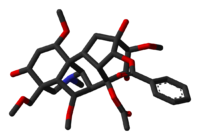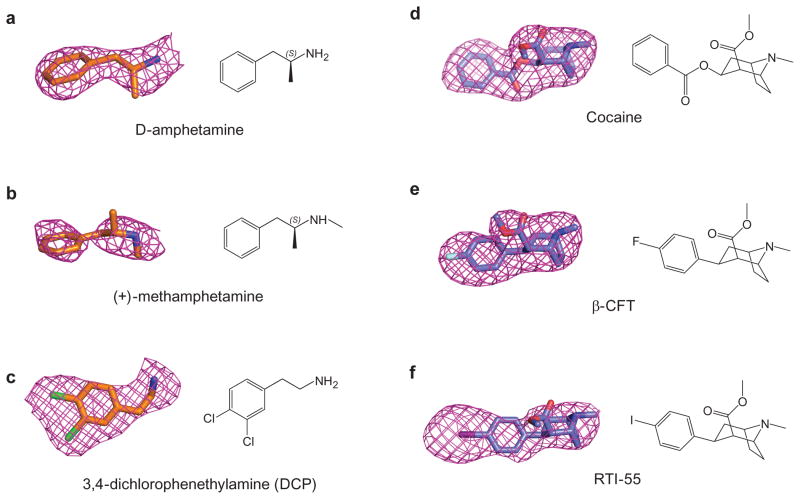Can someone explain a bit to me about one of the morphine rules and opioid SAR, particularly the quaternary carbon?
It doesn't seem like the quaternary carbon itself can get involved in much interaction with the receptor site, but I assume that instead the carbon being any less than quaternary in that part of the pharmacophore would preclude proper binding somehow?
Or does the Q carbon somehow determine the overall geometry of the molecule in an important way, is it rather that a neopentylene (do I get that right?) moiety must be present sterically?
And what are some examples of the boundaries of this rule? Heteroatomic substitution? What are curious opioids that defy this morphine rules, or others for that matter?
I'm not too sure the quarternary carbon is off much importance to opioid SAR. The more polar groups are much more significant factors that affect the affinity of a compound to the mu opioid receptor. For example, several open chain opioid analogues exist, some with several times the potency of morphine itself (e.g. fentanyl), implying that the rings in morphine are not THAT important. We would call morphine a rigidified structure, and rigidified structures often have incredibly high affinities at receptors because they exist in a conformation close to the conformation an open chain analogue would bind to in the receptor. If an open chain analogue has to change its conformation to one different from its energy minimised conformation, then it is less likely to bind as it spends less time in higher energy conformations. So fixing a drug to a certain conformation (often done by nature with many toxins) can result in very strong binding. I think that it just so happens that the conformation of morphine is pretty good, but nowhere near the optimal conformation for strongest binding to mu. We know this because there exist several open chain opioid analogues with several times the potency of morphine (e.g. fentanyl analogues and methadone analogues to name a few). This suggests that functional groups play a much greater role in SAR than shape of molecule. I will briefly discuss the main points in opioid SAR.
The nitrogen in morphine plays an important part in SAR. First of all, if the nitrogen has 4 alkyl groups on it, and is thus charged (for example in methylnaltrexone), then it is too polar to cross the blood brain barrier and will have no psychoactive effects. It still binds strongly to peripheral opioid receptors, and this tells us that when the opioid is bound to the receptor, the nitrogen is charged (and thus protonated in the brain) when it binds to mu. It forms an ionic bridge with a negatively charged amino acid residue (such as aspartate). It's observed that making the nitrogen secondary in morphine (
https://en.wikipedia.org/wiki/Normorphine) significantly reduces potency. I think this is because normorphine can act has a H-bond donor, which disrupts the ionic bridge by changing its angle or something. So a tertiary nitrogen is important for good opioid activity. And as you will see, almost all opioids in clinical use have a tertiary nitrogen.
The 3-OH group in morphine plays an important role in binding. It acts as a H-bond donor. Adding a methyl group at this position (codeine) significantly reduces potency.
The 6-OH group in morphine is not involved in binding very much at all and is not significant. It can be replaced by (long) alkyl substituents and still retain potency. Thus one can add lipophilic substituents on this group, like in heroin, to increase concentration of the blood reaching the brain.
The ether bridge is not important for binding to mu, but removing it increases the time taken for the blood to reach the brain. Ethers are weird in that they slightly increase polarity but not massively. Diethyl ether is a non polar solvent, of course. I think, to cross the BBB most effectively, you need in general a pretty lipophilic compound, with a few hydrophilic spots to stabilise it initially as it approaches the phosphate head (someone correct me if I'm wrong, I'm not too sure on all that logic). Ethers suit this purpose best. Alcohols, less so, and carboxylic acids cross the BBB in very small proportions. I think it is something to do with ethers not having a labile hydrogen, and thus it is not that unfavourable for them to be surrounded completely by alkyl chains in the phospholipid bilayer, at least less unfavourable than alcohols and carboxylic acids.
Hydrogenating the double bond in morphine increases potency. It relieves some strain on the molecule, and lets the molecule conform to a slightly more optimal binding conformation. More evidence that the morphine conformation is by no means the best opioid conformation for strongest binding.
Adding an alcohol group on carbon 14 increases potency (e.g oxycodone, oxymorphone). This is likely because this group acts as a H bond donor or acceptor while bound to the receptor.








